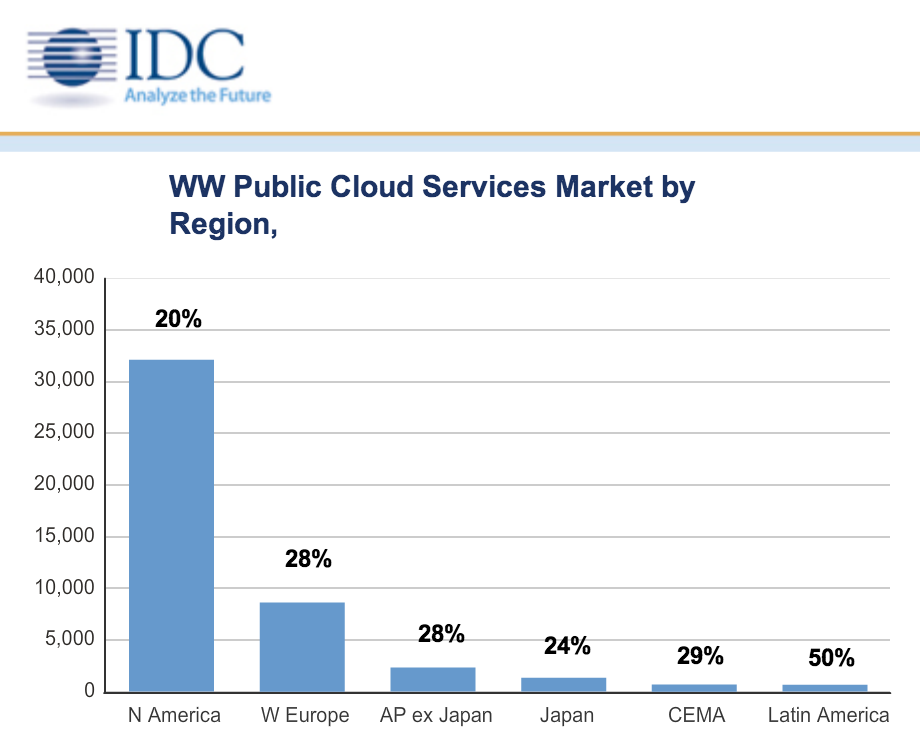 If the success of Amazon Web Services (AWS) has demonstrated anything, it’s been the popularity of public solutions in the early days of cloud computing.
If the success of Amazon Web Services (AWS) has demonstrated anything, it’s been the popularity of public solutions in the early days of cloud computing.
That popularity appears to continue, too. In fact, recent research from IDC uncovered newly intensifying market-share battles now under way in the increasingly valuable public cloud services market. Global public cloud services reached a total market size of $45.7 billion in 2013, according to IDC’s latest Worldwide Semiannual Public Cloud Services Tracker, and IDC expects the market to follow a compound annual growth rate of 23 percent until 2018.
Increasingly, however, organizations are showing fresh appreciation for the distinct benefits of hybrid and private cloud solutions, as underscored by newly released reports from Technology Business Research.
To wit: Not only has a full 20 percent of the large enterprise market integrated at least two clouds to create a hybrid cloud, according to TBR, but “the volume of integrations will increase over the next five years as customers demand improved data interoperability, connectivity and customer experience,” the researcher predicted. TBR puts the hybrid integration market at $7 billion in 2014.
In the private cloud realm, meanwhile, TBR estimates a $41 billion private cloud market in 2014, growing at a 14 percent compound annual growth rate to $69 billion by 2018.
‘The Best of Both Worlds’
“In general, we have seen more use of public cloud and public PaaS thus far compared to private and hybrid clouds,” Jay Lyman, a senior analyst for enterprise software with 451 Research, told Linux.com.
“However, that public cloud use has mostly consisted of Web and mobile applications,” Lyman noted. “As enterprise interest and use of cloud computing infrastructure grows, we are seeing stronger pickup for private and hybrid clouds.”
Enterprise organizations are typically seeking “the availability, scalability and economic advantages of public cloud infrastructure, but are reluctant to go beyond their own resources for control, security, data, compliance, regulatory and other enterprise concerns,” he added. “Thus they seek private cloud infrastructure and hybrid implementations that allow them to get the best of both worlds.”
Large Companies Leading the Way
Recent data from 451 Research’s ChangeWave service corroborates these trends, Lyman said.
For example, some 31 percent of the 1,137 respondents to a January ChangeWave survey reported that their company operates a private cloud — up two percentage points since October 2013, he explained. Among those currently using a private cloud, moreover, 40 percent said they’d increase their private cloud spending over the next six months; that’s three points higher than in the previous survey, he added.
As for hybrid clouds, nearly one in 10 companies surveyed — 9 percent — reported using a hybrid cloud deployment, Lyman said, with large companies choosing that option at more than twice the rate (15 percent) of smaller ones (6 percent). Looking ahead, 11 percent of all companies reported they would be deploying a hybrid cloud six months from the time of the survey.
‘Cloud Bursting Capability’
“We can also see this trend playing out among large enterprises and service providers that are actually running applications and services on multi-cloud or hybrid cloud infrastructures,” Lyman noted.
Testing and development may be in public clouds while production deployment is in private clouds for security and other reasons, he said; alternatively, it could be the other way around, “with cloud bursting capability in public clouds for heavy traffic and related campaigns.”
Either way, “two years ago or so, multi-cloud and hybrid-cloud capability was simply a desire and demand for most of these large organizations, without many of them actually implementing it,” he concluded. “That’s starting to change as organizations get more familiar and comfortable with cloud computing and use of these private and hybrid infrastructures.”


